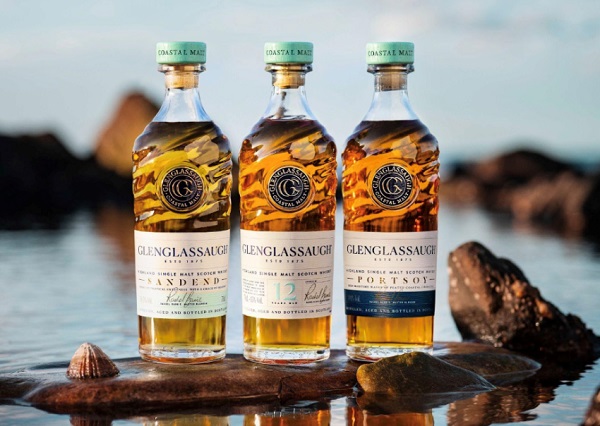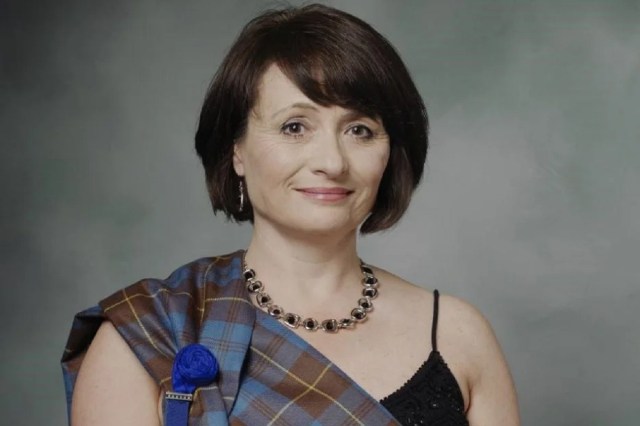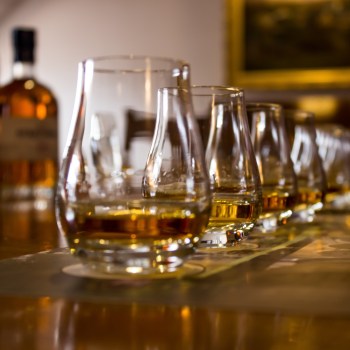Dr Rachel Barrie is a name that is renowned throughout the world’s whisky industry as a pioneer for women in the industry, but also the creator of some amazing whiskies.
One of the more recent projects to have engaged Dr Rachel has been the reopening and revival of Glenglassaugh and its new core range of whiskies, 12-Year-Old, Sandend and Portsoy. Speaking to Bars and Clubs she said just how impressed she had been with the Australian market and how important it is to Brown-Forman and its whiskies.
“The passion here has blown my mind, just how many people have so much knowledge and it’s such a huge community and everyone seems to know each other,” she said.
“And as Australia is growing it is very, very important to us – not every market is growing, it’s a huge market here and with Glenglassaugh I can see that this year, it’s probably going to be our number one market.”
She added: “Glenglassaugh is a coastal single malt, and the type of flavours people enjoy here, that coastal sweet and salty flavour. Everyone lives by the coast here and they just get it, and they love the taste. So Glenglassaugh will be really successful here and every bar I am going to, I hear the next day that they have stocked it, so for people to get it that quickly and put it on the bar is just amazing.”
In terms flavour profile, Dr Rachel described Glenglassaugh as “luscious, coastal elixir, I would say, tropical fruit, with a crack of sea salt – if that makes sense, you know if you add salt to tropical fruit, it makes it more fruity. It’s never dry, Glenglassaugh converts the barley 100 per cent into this luscious taste, compared to every other distillery I have ever worked with.
“I think this is partly down to Glenglassaugh’s position on the coast, it couldn’t get any closer to the water without being in the sea, and we’re the only part of Scotland that has rolling surf coming into the bay, and all of that along with the maturation, the fermentation, the wooden wash backs being open to nature, the elements, it’s very elemental, all of that really helps to convert all the barley into fruit, into these lovely, luscious flavours and textures. It’s very textural, and a lot of that is to do with being very close to the ocean.”
Talking about the range, Dr Rachel told Bars and Clubs: “We have the 12-Year-Old which is the flagship and it’s an age a lot of single malt drinkers gravitate towards, but there is an upcoming consumer who is really interested in the diverse flavour profiles that you can get with non-age statement whisky. NAS whiskies are ones that you can really bring out different characteristics in, they are a bit more funky, a bit more cool and with Glenglassaugh we have got the Sanded and Portsoy, which are very different from each other.

“There’s higher strength, 50 per cent with the non-age and these are ones that get people interested, ‘oh it’s got Manzanilla casks, oh look at that strength’ so there is definitely a rise in the number of people who are enjoying good non-age statement whiskies, as long as they are really good.”
WHY HIGHER STRENGTH
With that higher ABV on the NAS whiskies in the range, Dr Rachel explained the process of getting to that strength.
“Obviously, you taste them, the sweet spot for me is where the texture and flavour is greater than the alcohol. With some young whiskies, some high strength whiskies, you are going to get more burn, more alcohol and less flavour,” she said.
“As long as you have got really, really good wood and you’ve got a recipe that’s going to give you that voluptuous texture and is really creamy and smooth and rolling waves of flavour like Glenglassaugh, then it can survive the higher strength and it makes it a much more intense experience. Down at 40 per cent, it just isn’t quite as luscious. Now that’s not the case for every distillery and I think you want it to be as full flavoured and as interesting as it can be.
“If you go too high then the alcohol can take over, there is a sweet spot between your cask maturation influence and the alcohol, where you just get to the perfect balance that is right for that recipe.
“Again, it’s a lot of fine tuning, starting high, going low and working out what is the best balance and loads of tasting. I do try quite a range of different strengths; I get other people to taste as well and see what they think.
“There’s a lot of work going in to getting the Glenglassaugh range right so try it neat first and then play tunes, and the bartenders are playing tunes already.”
There’s one other important note Dr Rachel wanted to emphasise with the whiskies: “Across all our whiskies, and this is something I feel passionately about, we do not add any caramel,” she said.
“It makes my job and my team’s job incredibly difficult because casks vary. But for me, you put caramel in, and it totally destroys the consumer’s experience because they see it and think ‘that’s a beautiful colour’ but then they nose it and it’s a bit flat, because caramel tends to flatten things, and then they taste it, and it totally disappoints. We get colour consistency with a specification of variance, but we have to work with natural variation and the consumer shouldn’t see a difference.”
THE MASTER BLENDER’S ROLE
There’s a lot more to the role of Master Blender than just tasting whisky to decide its strength, and Dr Rachel explained to Bars and Clubs how she goes about creating new whiskies, how she maintains consistency and the other important aspects of her job.
“You start with the distillate, and you start with unpeated and then you’re looking to add some peated and I have to decide what proportion that is, which is then going to influence the products of the future.
“And then deciding on the wood policy at the start is really, really important, again with the new make. First fill Bourbon is phenomenal for maintaining distillery character and giving you that sweetness but obviously nothing overpowering and then you get to play tunes as well.
“The lion’s share at Glenglassaugh, and Benriach is Bourbon cask and then over time I will experiment with other casks so I can fine tune it. It’s totally different with Glendronach, which is a very traditional Sherry bomb, but it takes a lot long to mature and that’s not going to change – that’s the nature of its slow maturation in the valley. But then you have Glenglassaugh on the coast and it can meld with the elements of nature, it’s not heavy, it’s a sweet and salty whisky.
“So, I have my base of really good quality first-fill Bourbon, that’s really important and then I layer in other casks to create and bring out different facets of flavour.
“With Glenglassaugh I get to play around with the coastal casks, so I think about places I have been in the world, where I can get casks from that I think will really work. So, Manzanilla casks, coastal red wines, work really well and bring out characteristics in the spirit.
“From every parcel of casks filled, which on any one day might 20 or 30 casks, I’ll sample at least 10 per cent of that. So, I get three or four casks from every parcel and then just start from there, to get a representative number of samples from every filling is really important. Every cask will have been sampled at least once in its lifetime and usually that’s enough to even out the differences and understand what’s the variance in that particular parcel of casks. Then I make up a pilot blend that is representative of the next year’s production.
“Sometimes you do get surprises, but most of the time it’s good; Sherry casks are the most variable and Bourbon casks are very consistent. And then those pilot blends scale up, but you are always comparing and contrasting with your benchmark, I might add a few casks to fine tune it and get it to where I want it to be every time. There’s a lot of nosing and tasting and fine tuning.
“A big part of my job is around the wood policy and strategy and deciding how much we are going to spend on wood and deciding where we are going to get the wood from, how much are we going to buy of what.
“I also experiment with casks, like Manzanilla, I thought that would work so it’s not a big shock, but it has just kept getting better and better – the salted caramel was even more than I was expecting. So, there’s also an element of working out how to maintain different age statements, what should stay in a barrel a bit longer and then the icing on the cake is single cask expression.”
And in a final word for Australia, Dr Rachel said: “I think Australia is going to be the number one market for Glenglassaugh because people just love it so much already and I can’t wait to come back in a year’s time and see how it’s all going.”



